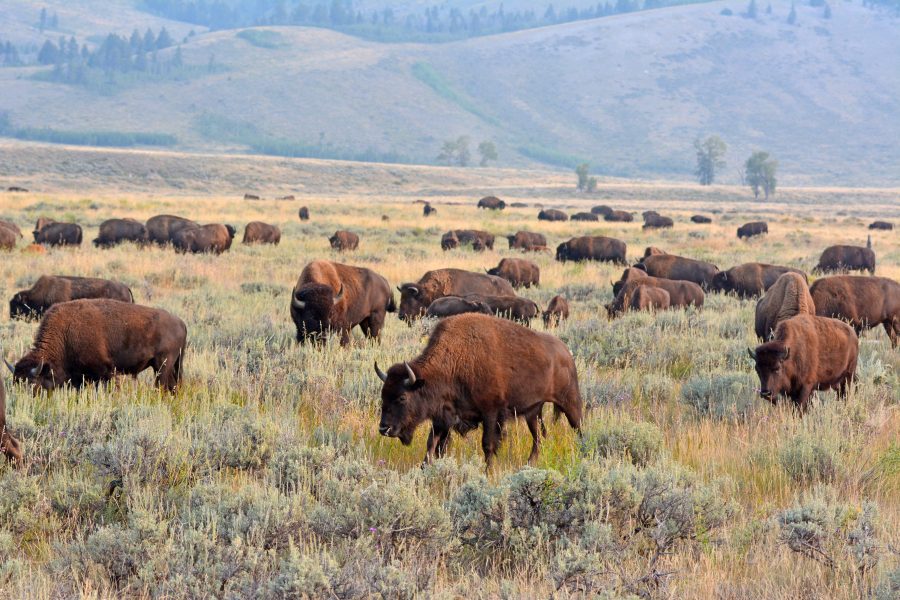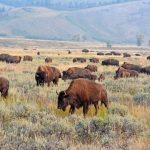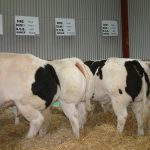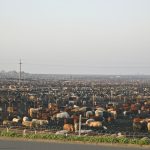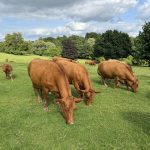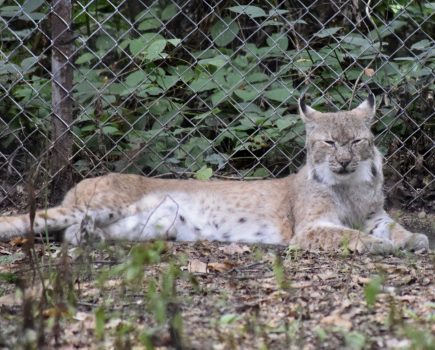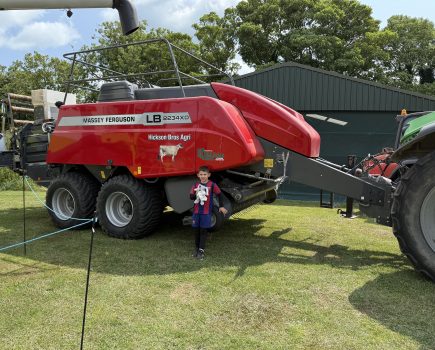The climate crisis and riparian pollution evangelist George Monbiot gives many, perhaps most, farmers a pain in the rear end or a dangerous spike in blood pressure. He is particularly scathing, as a committed vegan, about our farm animals, cattle in particular, for their contribution both to heating the planet and to the sorry state of our rivers.
We would be foolish, however, to dismiss his arguments, for they are well researched and closely argued, albeit with journalistic hyperbole. I would suggest that Monbiot is a tad selective in his use of data and tends to ignore past hordes of wild herbivores, the problems of human numbers and our increasing consumption of our planet’s resources.
Nevertheless it is undeniable that we must take man-made climate change and ecological degradation seriously. We must also address our growing population, and most of us would benefit from eating fewer animals, though there is no need for us all to become veggies or vegans.
I wish to make the case that extensively reared livestock are an essential part of farming and of restoring our depleted ecosystems and can contribute positively to reducing greenhouse gasses. There is ample evidence that mixed farms are biologically richer than specialists and less likely to be major emitters of green house gases. I would also claim they give farmers and visitors a good deal more pleasure than homogeneous, lifeless fields of cereals.
Most farm animals, reared extensively, contribute to regenerative farming and agroforestry, enriching soils, contributing to carbon capture and, most importantly, enhancing biodiversity. Yes, ruminants release methane, mainly from gastric fermentation, but we should remember that the vast herds of African antelopes and American bison that preceded us failed to heat the planet. They were vital components of vibrant ecosystems.
Sadly, these wild ruminants have been replaced by domesticated species, but in ever greater numbers; hence a net gain in atmospheric methane. It is, however, dwarfed by that from oil and gas wells and by methane released from thawing permafrost. Humans also emit methane, some more than others! Reductions in national herds are needed to cut farm methane, but the main problem remains the burning of fossil fuels, which sadly shows no signs of dropping. The current prediction is a 3.5°C rise in temperature by the end of this century and I am glad I won’t be around to see it.
If we are to reduce livestock numbers, we must reintegrate those we keep into the wider agricultural scene as farm eco-engineers. A return to mixed farming, if you will, that delivers greater resilience to extremes.
But the business model between farmers and the public needs a rethink. Dropping industrial rearing of animals for slaughter would be a quick ethical gain, but what of the big supermarket chains that require reliable, steady flows of large amounts of produce from a few large suppliers, the very antithesis of smaller scale, local, low carbon, low mileage food.
If most farms returned to mixed production, we would need greater localisation of the supply chain, with more, smaller abattoirs supplying local shops, pubs and restaurants, alongside market gardeners share cropping on a few acres on many farms for seasonal vegetables and DEFRA-supported orchards supplying top fruit and capturing carbon.
This all sounds very retrograde, but it could return life to the heart of many towns, provide many local jobs, enhance community life and, with it, wellbeing. But to what extent could this be replicated in cities? Could mass-produced protein for high volume processed foods be laboratory cultured and factory based?
Most of our native livestock breeds do well on pasture, converting forage grown in fields less suitable for arable crops and creating habitat. They self medicate on botanically rich forage. Grazing and dung restores both numbers and variety of insects to feed our soils and birds, the way a rich ecosystem should.
I will use cattle as the model of the way farmers have moulded stock in response to changing demands. The Sussex is the breed of the South East, but we chose the once dual-purpose cattle of Devon’s South Hams, provider of Devon clotted cream. I hope readers will forgive my choosing this larger breed with strong bones, plenty of rich milk, a very amenable character that doesn’t run to fat too easily but which produces marbled meat of great quality.
The South Devons evolved on the rich meadows of the South Hams, and before the second world war their large udders and generous teats were hand milked. Changing markets meant changing to suckler beef, which, in turn, led to selecting cattle with smaller teats, neater udders and a meatier conformation. It is a bigger breed than most UK natives, fine on our Cotswold brash but may not suit all soils.
The myostatin gene, a particular segment of DNA on one chromosome, discovered in 1997, determines meat and muscle development in mammals, including us. This muscling trait has been known for some time and, indeed, was selected for before the mechanism was fully understood. The Belgian Blue, for example, is homozygous for a particular gene deletion that produces extreme muscling. Limousins have a different deletion and myostatin variants have been selected in sheep breeds like the Charolais and Beltex. The incidence of myostatin deletions is also high among professional weightlifters.
Some gene variants are disruptive, yet selection is a response to the Europe carcase payment grid, despite a reduction in meat quality. A couple of gene variants are found in South Devons and some breeders have actively selected for them. With experience, we decided to breed out one variant from our herd, at the same time selected for polling, another gene deletion. We have gone down this path to avoid the calving difficulties associated with muscling in both dam and calf and to improve mobility.
As a result we have animals that contribute greatly to the farm’s ecology and diversity. The animals themselves give great pleasure and scientific stimulus to us and our visitors. They are a great asset to our environmental schemes and even contribute a bit to the farm’s bottom line.
- What’s left of the Bison herds and their habitat ©John Frisch, Grand Teton National Park, Wyoming
- Belgian Blue backends. The effect of myostatin gene mutations
- Industrial feed lots, USA ©farmsanctuary.org
- South Devon cows
For more like this, sign up for the FREE South East Farmer e-newsletter here and receive all the latest farming news, reviews and insight straight to your inbox.

